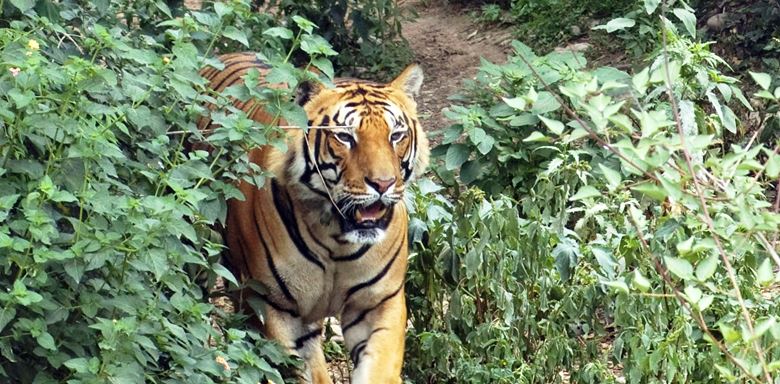ENVIRONMENT
There is an illegal market for the trade of tiger body parts and the restless industrialisation process leading to tiger displacement from forests further renders it difficult for tigers to enjoy a safe environment. The sharp fall in the number of tigers makes it urgent to initiate solid plans for tiger conservation.
Sundaresha D.S. |The New Leam

The sharp decline in the tiger population in India focuses our attention on the inadequate steps that we have taken to conserve the animal species. It also points out towards the fact that we have an unsustainable pattern of development that is hazardous for a wide variety of plants and animals. Apart from making the climate conducive it is also important to stop poaching and launch an action plan that makes the conservation of tiger population feasible.
Some of the key areas that demand focus are the creation of tiger reserves, anti-poaching committees and forming the Global Tiger Forum. One of the most serious concerns faced by the country today is that the number of tigers is dwindling as the days are passing by.
The global population of tigers has reduced from 1, 00,000 in the 1900’s to less than 4,000 in the 1970’s.
As the urbanisation and industrialisation processes increase, the wild animals have become vulnerable. Tigers are among the animals that are bearing the brunt of rapid urbanisation.
It is known that there are nine subspecies of tigers, out of which three have become extinct in the last 80 years. Each subspecies of tiger is getting extinct in every 20 years. It is predicted that in the coming decade all tigers may become extinct. The global population of tigers has reduced from 1, 00,000 in the 1900’s to less than 4,000 in the 1970’s.
The Bali tiger got extinct in the 1930s, Caspian tiger got extinct in the 1970s, and the Javanese tiger became extinct in the 1980s.
The IUCN reports that the remaining subspecies of tigers are also endangered. Two of tiger subspecies are noted as critically endangered. Remaining six subspecies of tigers are Bengal, Indochinese, Malayan, Siberian, South China, and Sumatran, their number is estimated between 3,000 to 3,600 tigers.
The number of tigers is significantly declining because of industrialisation and urbanisation. As we invented new technology, we started tilling the land by cutting the forest. The farming process has started to pose threat to wild animals. But a serious threat was posed when urbanisation process continued. As the population increased, it demanded food and housing for all. To survive people started to cut trees and to fulfil other needs they established industries.
All these processes made animals come to the urban locations. Many times village people complain about their farms getting destroyed by wild animals. As the number of wild animals dwindles, tigers come to villages to hunt domesticated animals of farmers in search of food. It is all started with an ecological imbalance.
It is not only limited to tigers, the same argument can be extended to other animals too. For example, recently seven elephants died because of electrocution. It is human responsibility that one should live and let animal life and nature thrive.
The rapid urbanisation accompanied by unsustainable patterns of living have displaced animals from their habitats, deprived them of their food and ended their habitats- this makes them vulnerable and makes them unequipped to continue living. Today we are living in a scenario where only six different sub-specifies of tigers exist. It is estimated that all over the world less than 4,000 free range tigers lived.
The main threats to the survival of tigers are habitat loss and poaching. How best ways to conserve tigers and encourage breeding can be implemented has been on the constant agenda of wild life conservationists and several countries. The urgent need to recover, conserve and encourage the breeding of tigers is felt more than ever today when the number of tigers is fast dwindling. The conservationists argue that saving the tigers implies protecting their environments and encouraging natural foliage.
It is important that people throughout the world come together and work towards sustainable development that help both animal life and human life to exist together.













